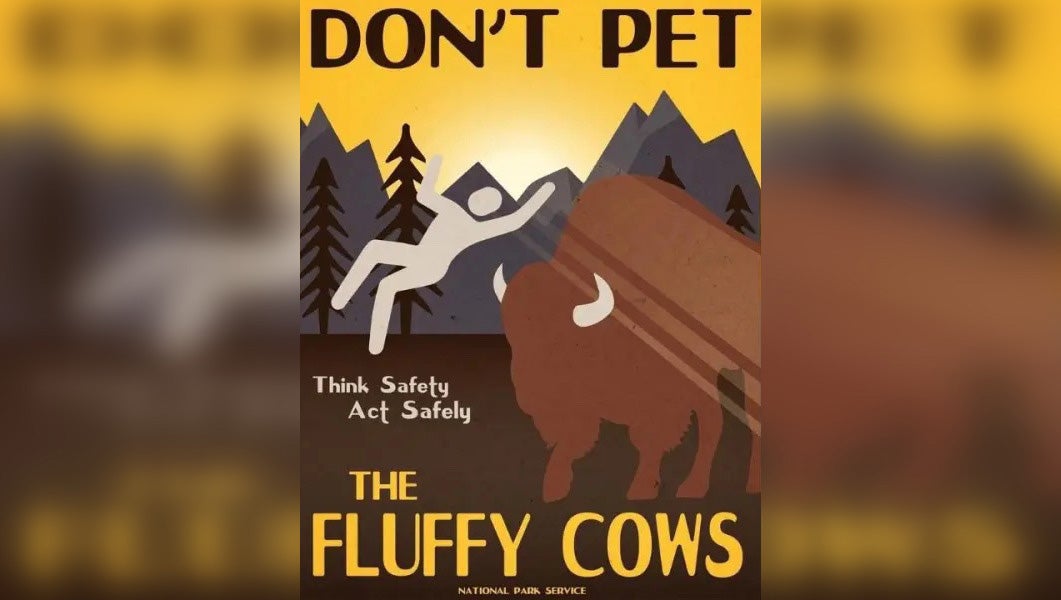Products You May Like
Get full access to Outside Learn, our online education hub featuring in-depth fitness, nutrition, and adventure courses and more than 2,000 instructional videos when you sign up for Outside+
Sign up for Outside+ today.
First of all: I get it. Bison look like they’d be fun to touch. They’re fuzzy and cute in a certain light, the way bears’ big, pre-hibernation bellies or moose’s long, dopey faces are cute. It’s why my toddler has stuffed animals of all three of those sitting in his bed right now: Something in human biology or North American cultural conditioning makes us look at those animals and swoon. Get a little more familiar with IRL bison, however, and they start to seem a lot less, well, cuddly. Like bears or moose, bison are large animals that are armed to defend themselves, and they do not appreciate strangers getting close to them or their families.
During the past few weeks, a few visitors to Yellowstone have gotten a painful lesson in just how dangerous bison can be. Over a span of three days in late June, two visitors ended up wounded in bison encounters, one after his group approached a grazing herd and another when she surprised one while returning to her car. For visitors thinking of following in their footsteps, the National Park Service has a simple message: “Don’t pet the fluffy cows.”
The NPS shared the cheeky slogan on Instagram, alongside a retro-style graphic of a bison tossing a stick figure in the air—and some tips for staying outside of the ungulate’s impact range. Besides not approaching them (park regulations require visitors to stay at least 100 yards from predators and 25 yards away from bison and everything else) the park service reminded visitors to mind their manners.
“Even when you’re farther away, leaving wildlife alone can help your viewing experience—plus it’s the law,” the agency wrote on Instagram. “It’s illegal to feed, touch, tease, frighten, or intentionally disturb wildlife. Remember that wildlife in parks are wild and can be unpredictable when they’re disturbed or surprised.”
It would be easy to blame the increase in animal-human incidents on Instagram-induced selfiemania or the influx in new park visitors during the Covid pandemic. But the truth is that this particular problem is much, much older than that: Tourists have been making bad decisions—from kidnapping baby deer to scalding themselves in geysers—in U.S. national parks for more than a century.
Whatever the cause, educating visitors about the realities of life in the outdoors is an essential part of dialing back incidents like those—and with this slogan, the NPS may have hit on a message even my kid will be able to understand.
